Countdown to crayfish
Sweden is known for its various seafood specialties, especially in the late summer when certain crustaceans are mature and fresh.
-
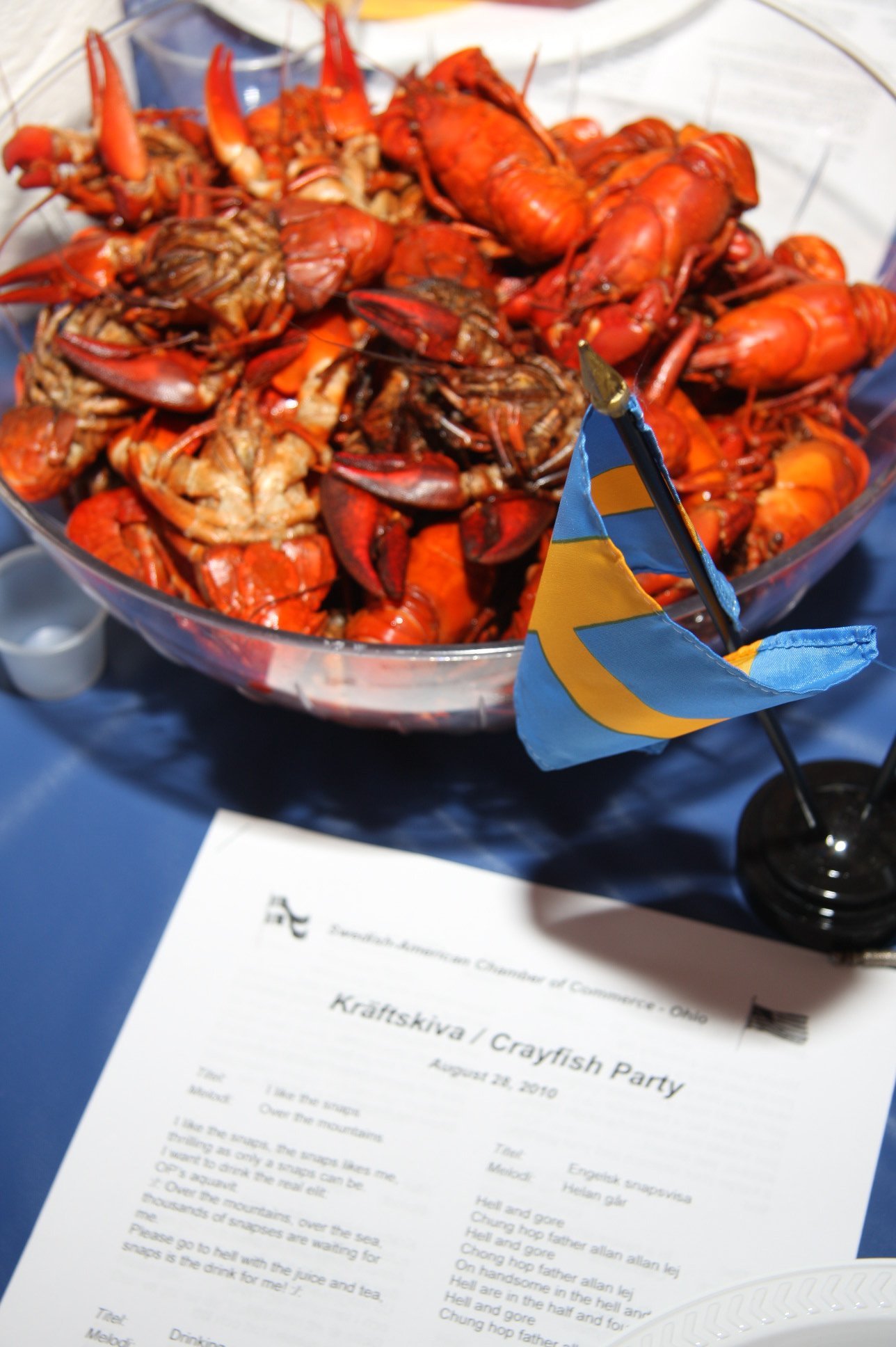 Table set for Ohio's Swedish Cultural Society's annual crayfish party. Photo: Ingemar Svala
Table set for Ohio's Swedish Cultural Society's annual crayfish party. Photo: Ingemar Svala -
-
There are three main headliners in August: crayfish (kräftor), fermented herring (surströmming) and eel (ål). The crayfish season begins two weeks ahead of surströmming season and the “dark days of eel” (ålamörkret), though the crayfish season is generally shorter and more widely enjoyed. Seeing all the celebrations of spring and summer, maybe the country takes a month off because its lucky citizens are in a constant cycle of eating various delicacies … and recovering from everything that must be consumed with them.
-
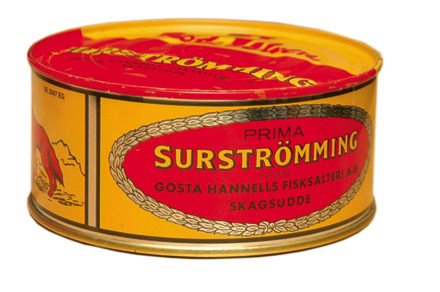 Imagine the smell when one thousand cans like the one above, filled with ”surströmming,” exploded in Borkbo…
Imagine the smell when one thousand cans like the one above, filled with ”surströmming,” exploded in Borkbo… -
-
August 8: Crayfish
At one time, the lakes of Sweden teemed with the black gold that is crayfish. It was exported to the ritzy restaurants of Paris, London and Berlin, but over-fishing threatened to annihilate them and regulations were enforced.
It wasn’t until 1994 that a ban on fishing for crayfish in Swedish lakes during certain times of the year was lifted; the last day of the ban had been August 7, which made August 8 the first day to start eating them — and the date stuck. Swedes can also import crayfish from other countries, which means it can be eaten year-round, but tradition often gets the better of us and having a ritual is appealing, so most Swedes nowadays celebrate the crayfish premiere on August 8 every year, the date they can finally give in to their cravings and celebrate — with a crayfish party. -
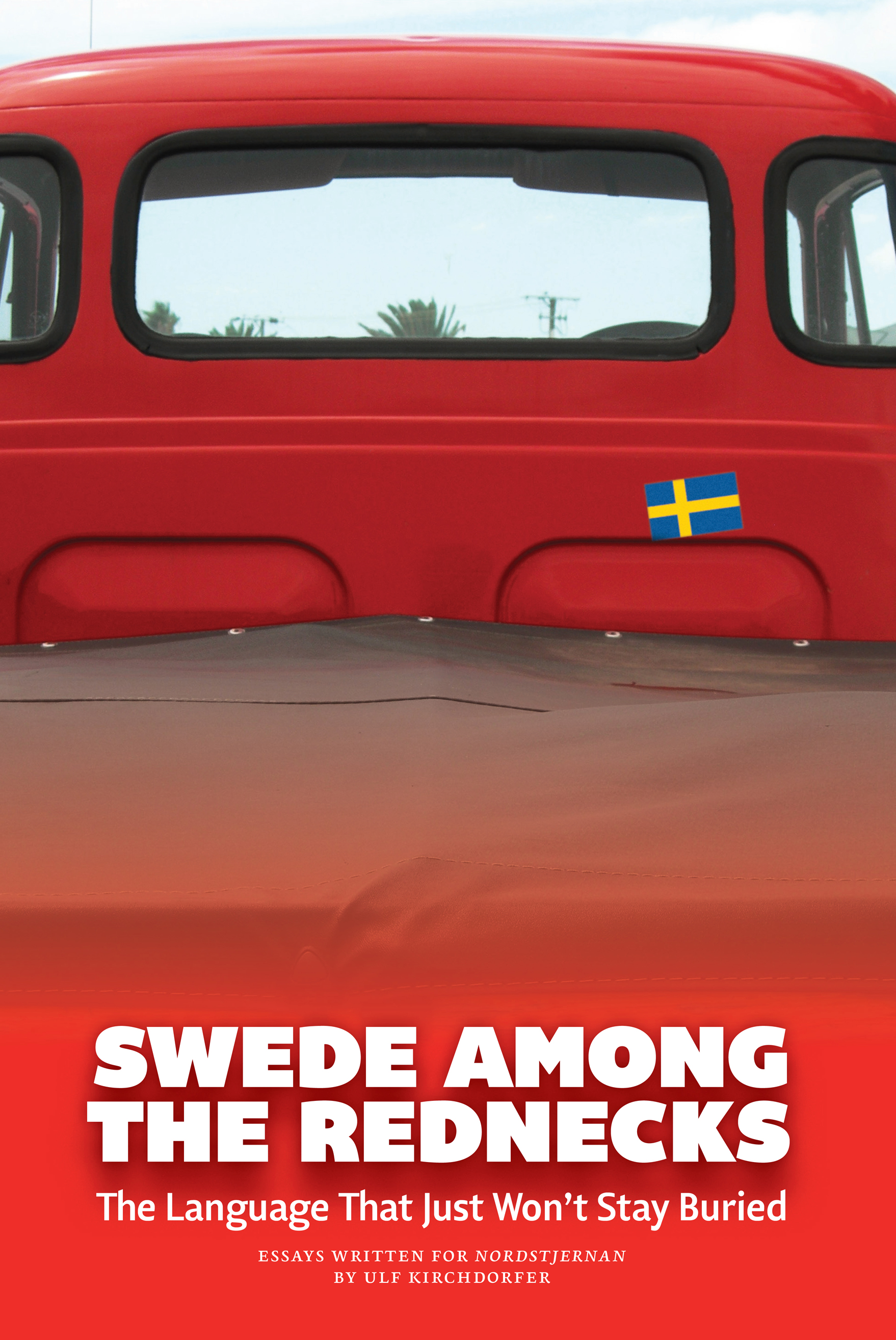 Ulf Kirchdorfer's book, "Swede Among the Rednecks" - available at <a href="http://tinyurl.com/ztt7kbr" target="_blank">“Amazon”</a> or through Nordstjernan, 1.800.827.9333
Ulf Kirchdorfer's book, "Swede Among the Rednecks" - available at <a href="http://tinyurl.com/ztt7kbr" target="_blank">“Amazon”</a> or through Nordstjernan, 1.800.827.9333 -
The crayfish party (“kräftskivan”) has expanded into a meal surrounded by all manner of accessories, preferably with an authentic full moon thrown in. In August, shop windows display variations on the theme with crayfish-decorated bibs, paper plates and napkins. There are special crayfish knives, crayfish songsheets, special bowls, glassware and snaps decanters, and of course, the grocery stores have deep-frozen and fresh – live - crayfish. Lanterns are strung above long picnic tables, bibs and silly hats are distributed and buckets of cold crustaceans are consumed.
Eating crayfish the Swedish way is special. It often includes side dishes such as crisp bread or toast and cheese, and a variety of equally important rituals, not the least of which includes drinking snaps (schnapps). A select few other dishes such as Västerbotten cheese pies, meatballs or Jansson's temptation are sometimes served, either to create a full meal or to accommodate those with less love for the crustaceans. But perhaps the most important part of a crayfish party is singing.
Every time one eats a crayfish, which is served cold with lots of salt and dill, a sip of snaps (a “nubbe”) must be downed and a song must be sung. Aquavit is basically spiced vodka, so drinking responsibly (or drinking water) is advised, but it is often more important to sing (loudly) than to actually drink a lot of snaps, which is also served ice cold and straight up in shot glasses.
Here's how to make your own party at home: Swedish traditions: 'Kräftskivan' -
 Once homely survival food, pungent preserved dishes such as surströmming have evolved into present-day delicacies – for (some) Swedes, anyway...
Once homely survival food, pungent preserved dishes such as surströmming have evolved into present-day delicacies – for (some) Swedes, anyway... -
Don't miss another important celebration or tradition, The only Swedish Newspaper in America covers all of the important traditions, the days to remember that create the unforgettable moments (mostly in English); Nordstjernan offers interviews and special insights into the lives of people in and out of Sweden, Swedish America and the U.S. Subscribe digital or in print (Your link to a Sweder Life)
August 18: Surströmming
Similarly – and luckily – the most important part of the surströmmingspremiären (fermented herring premier) is also singing. Many people are truly grateful for that, since this particular delicacy is sometimes said to taste even worse than it smells. It smells because a) it’s not only the number one smelliest fish in the world but b) it’s also actually fermented.
Surströmmingspremiären is nonetheless very important, even if only in concept. It always premiers on the third Thursday in August, so Swedes can make their plans for the next round of parties. This year the magic date is August 18. It is unclear how many Swedes actually enjoy this luxury, but some data suggests that half the population has it at least once a year and one percent has it on a monthly basis.
Until 1998 it was illegal to sell fermented herring before a certain date in August because the fish wasn’t likely mature enough. But there a couple theories for why Swedes eat this smelly fish in the first place. One theory dates to 16th century Swedish sailors who had only half the amount of salt needed to keep their fish fresh, and as it began to rot they sold it to unassuming Finnish islanders. A year later the Swedish sailors returned to the island and the locals asked for more rotten fish … and helped the Swedish sailors discover this “tasty” new way to prepare fish.
Another more likely story is that surströmming was developed when salt was too expensive for brining. When fermentation was used, just enough salt was required to keep the fish from rotting.
Today, the Baltic herring used for surströmming is caught in spring, just as it is about to spawn. The herring is then fermented in barrels for a couple months, then tinned. Half a year later, as that tin is bulging, it is ready to eat and sold in supermarkets all over the country. The Surströmmings Academy says one of the ten large producers, Oskars of Timrå, ships over 350,000 cans every year.
According to the “surströmmingsklämma” tradition in northern Sweden, surströmming should be eaten with “mandelpotatis” (almond-shaped fingerling potatoes) and “tunnbröd” (thin bread). In the south, surströmming is more commonly eaten with a variety of condiments such as diced onion, “gräddfil” (sour cream) or crème fraîche, chives and sometimes even tomato and chopped dill. Have snaps with your surströmming (and don’t forget to pinch your nose)! -
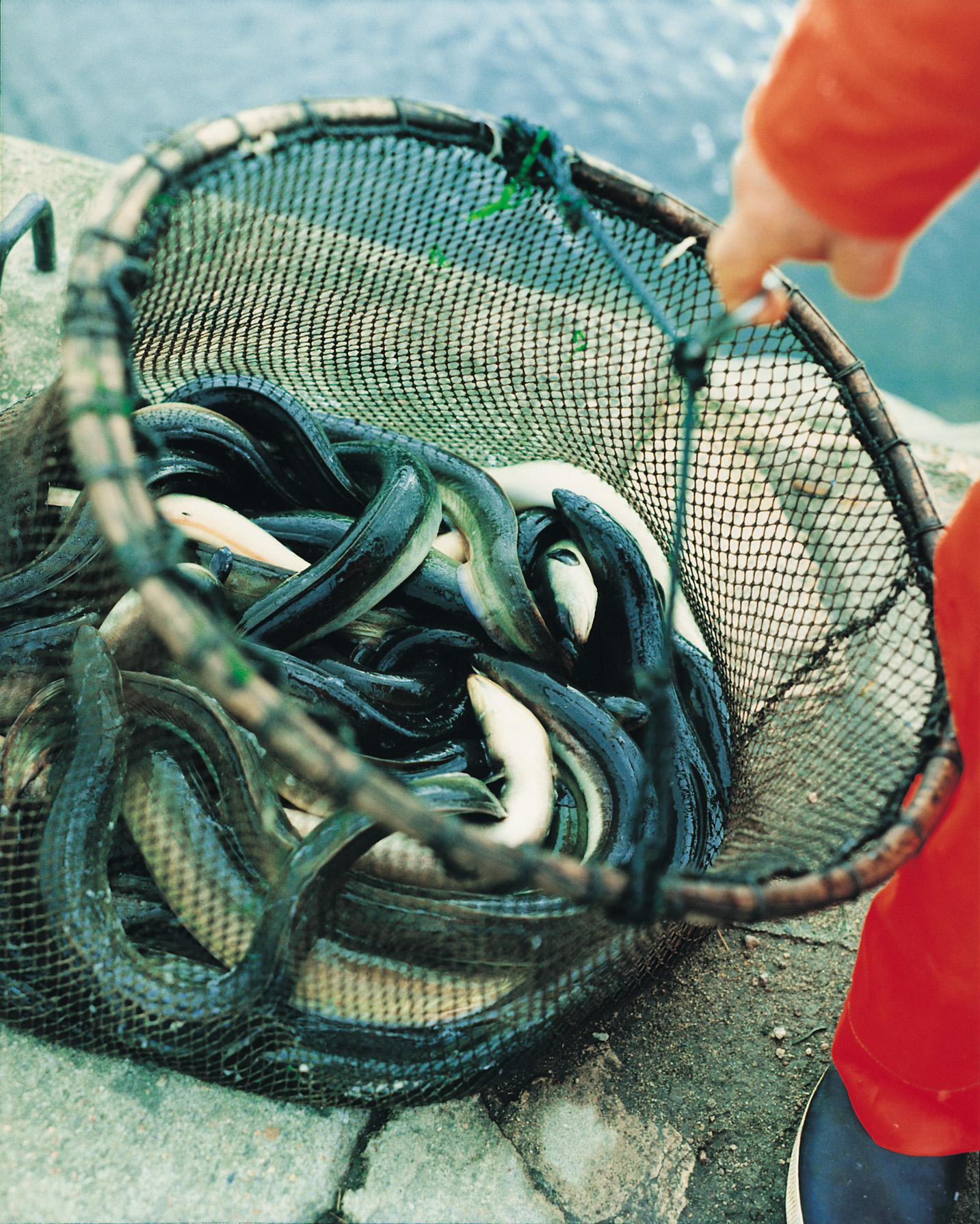 The eels during <i>ålamörkret</i> - the eel darkness of the fall season - are unable to see the nets and can be trapped on their way to the Sargasso Sea. Photography: Wolfgang Kleinschmidt.
The eels during <i>ålamörkret</i> - the eel darkness of the fall season - are unable to see the nets and can be trapped on their way to the Sargasso Sea. Photography: Wolfgang Kleinschmidt. -
The end of August: Eel darkness
The end of August, especially in the south, brings what’s called Ålagillen. “Ål” means eel and “gillen” doesn’t really translate into English, though we ought to have a word for it: It means something like “the chance to have a good time while eating and drinking.” These parties are less demanding and can last into the autumn, perhaps weaning Swedes off the crustacean-filled holiday month as they ease back into the daily life of work and school in September. It starts as "ålamörkret sätter in" (the eel darkness sets in) toward the end of August, when the moon is on the wane and the nights are a little darker; the eel can no longer see the nets and thus get trapped on their way to the sea. They move in great numbers as they pass the southeast coastline of Sweden, fattened up for their long journey.
There may be less emphasis on eel parties in part because the eel population has been threatened, and fishing for them has been limited in the last decade. Since 2007, only licensed fishermen are allowed to fish for eel, and they are entirely prohibited from doing so along western shores between September 15 and April 30; the licensed fishermen in the Baltic can choose a period of 90 consecutive days throughout the year. And, depending on the habitat, an eel must be at least 25 inches (65 cm) or 18 inches (45 cm) long.
At ålagillen parties, nothing but eel is served to eat, though there may be as many as 10 or 12 varieties of fried, boiled, smoked and grilled eel with various kinds of stuffing. It’s quite fatty and rich in flavor, and snaps is often the drink of choice, though it may not be quite as common as with surströmming.
We have never heard of an "ålagille" in North America, nor has anyone dared host a surströmming party — if anyone has, let us know. Kräftskivor, on the other hand, are abundant in the U.S. (See our events calendar to find a party near you or visit the nearest IKEA to set up your own.) If you are planning your own party in August, find all the ingredients you need by consulting our new apps at swedeninamerica.com and nordicinamerica.com. -
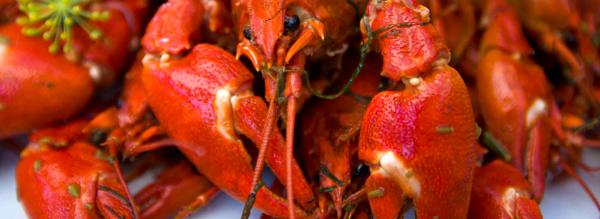 This delicious creature was "fished" from the invitation to the popular SWEA Crayfish party on Sept. 15 at Battery Gardens.
This delicious creature was "fished" from the invitation to the popular SWEA Crayfish party on Sept. 15 at Battery Gardens. -
Amanda Olson Robison
-
 In August evenings are still long but darkness has begun to arrive in Sweden. It is crayfish season.
In August evenings are still long but darkness has begun to arrive in Sweden. It is crayfish season. -
-
